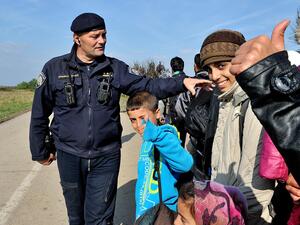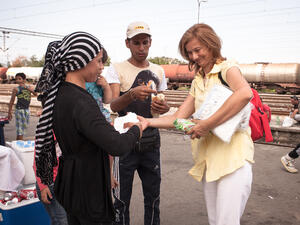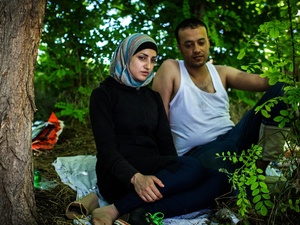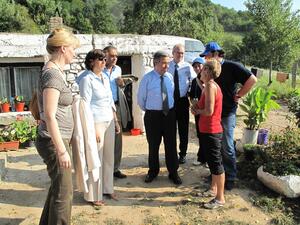UNHCR starts bus lines promoting free movement in the former Yugoslav Republic of Macedonia
UNHCR starts bus lines promoting free movement in the former Yugoslav Republic of Macedonia
Skopje - The United Nations High Commissioner for Refugees opened today a new bus service in the northern Kumanovo region, linking the villages of Vaksince and Lojane to Kumanovo town. This is the ninth bus line to be opened in the former Yugoslav Republic of Macedonia since mid September. Two bus lines have already been closed as normal public transport has resumed in some areas.
"UNHCR is pleased to see that the situation is normalising, and that people now can move more freely than before. We believe that the bus lines have contributed to this normalisation, and will continue to run bus lines in areas where movement is still being limited by checkpoints", says Amin Awad, UNHCR Representative and UN Humanitarian Co-ordinator. "Safe travel between war-affected villages and the towns is crucial also for people to be able to supply food and other needs for winter".
The communities of Vaksince and Lojane have felt very isolated. There are many security checkpoints along the road and inhabitants do not feel comfortable passing the checkpoints, saying they fear harassment and arrests. The situation has prevented students from attending schools and workers from going to their work places.
Responding to other villagers' needs, UNHCR doubled the number of trips from four to eight for the bus line linking Kumanovo-Lopate-Opae-Lipkovo, and added a third trip to the two already in place between Radusa and Skopje. The bus line between Tetovo and Selce has also been reinforced with an additional mini van. UNHCR presently runs seven bus lines, aiming at allowing ethnic Albanian and Macedonians to move safely across the many security checkpoints along the roads in the country until the travel situation has normalised.
In many areas, almost all villagers have now returned after having been displaced during the seven months long conflict. In other villagers, however, returns are limited due to security constraints, fear of mines and unexploded ordnance and the level of damage to the housing.
Since June, more than 60,000 refugees have returned to FYROM while less than 16,000 refugees remain in Kosovo. The number of displaced persons within the country is estimated to still mount to some 40,000.








